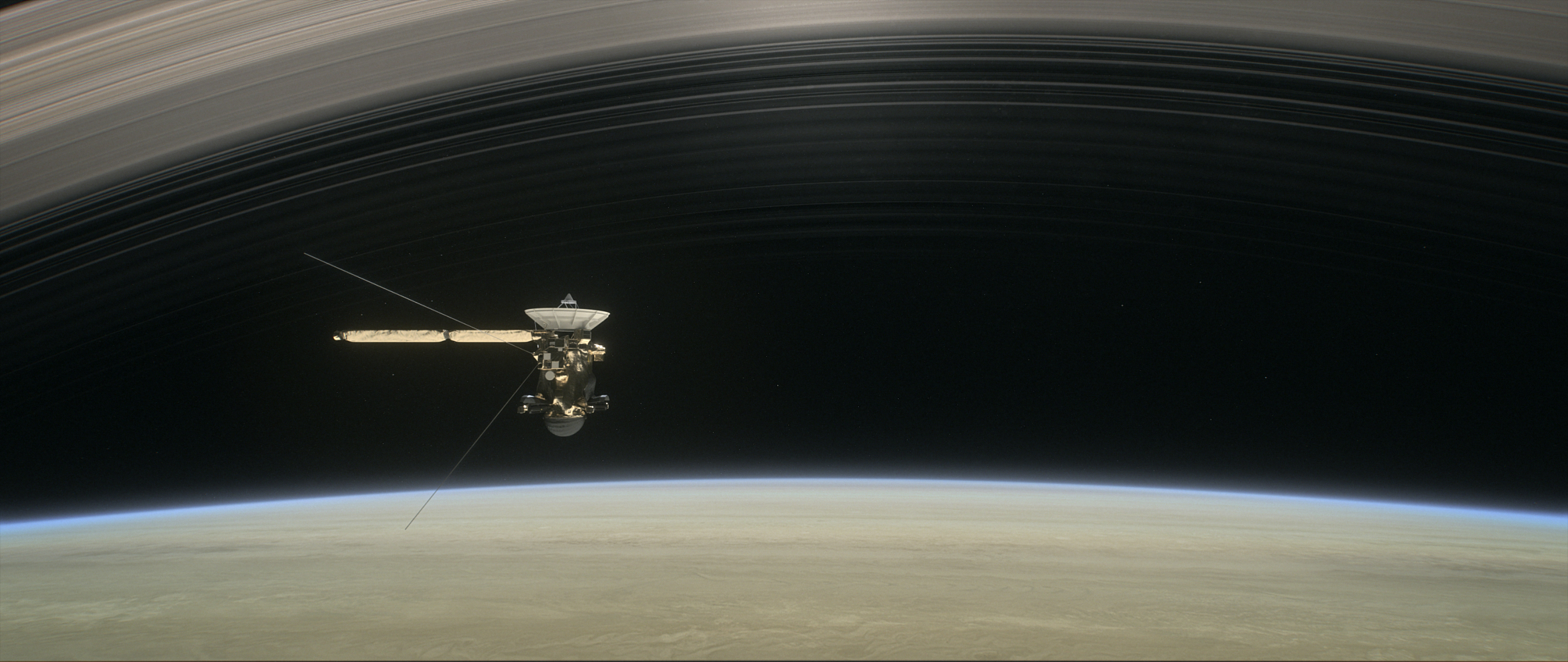Cassini Saturn Probe Preps for Last Hurrah

After orbiting Saturn for more than 13 years, NASA's Cassini spacecraft is getting ready to say goodbye.
On Monday (Aug. 14), Cassini made the first of five passes through Saturn's upper atmosphere, kicking off the last phase of the mission's "Grand Finale." After completing those five dives, Cassini will come back around again one last time, plunging into Saturn's atmosphere on Sept. 15.
This will be a suicide maneuver: Cassini will burn up in the ringed planet's thick air, turning into a meteor in the Saturn sky. [Cassini's 'Grand Finale' at Saturn: NASA's Plan in Pictures]
Cassini will keep sending back data on Sept. 15 until it gets to an altitude where atmospheric density is about twice what it encountered during its final five passes, NASA officials said. At that point, mission controllers will lose contact with the probe because its thrusters won't be able to keep Cassini's antenna pointed toward Earth; there will simply be too much air to push against.
During these last few orbits, Cassini will come so close to Saturn — 1,010 to 1,060 miles (1,630 to 1,710 kilometers) above its cloud tops — that atmospheric drag will be a factor, and the craft will need to use its thrusters to maintain its altitude. Scientists aren't sure how dense the atmosphere is in this region.
Mission controllers can adjust the amount of thrust as needed. If Saturn's atmosphere in this region is denser than the models predict, Cassini's thrusters will "pop up" the spacecraft on the first pass and increase the minimum altitude of subsequent passes. If the atmosphere proves thinner, then the probe can "pop down" and decrease the altitude, NASA officials said.
Cassini's last orbits should deliver a wealth of data, NASA officials said. The spacecraft will study Saturn's auroras and temperature, as well as the vortices at the planet's poles. Cassini's radar will be able to look into the atmosphere and see features as small as 16 miles (25 km) wide, about 100 times smaller than what it could see from its usual orbital positions.
Get the Space.com Newsletter
Breaking space news, the latest updates on rocket launches, skywatching events and more!
The Grand Finale will include one final swing by Saturn's largest moon, Titan, on Sept. 11. Titan's gravity will slow Cassini’s orbit around Saturn and bend its path to send the spacecraft toward its Sept. 15 encounter with the planet.
"As it makes these five dips into Saturn, followed by its final plunge, Cassini will become the first Saturn atmospheric probe," Cassini project scientist Linda Spilker, of NASA's Jet Propulsion Laboratory in Pasadena, California, said in a statement. "It's long been a goal in planetary exploration to send a dedicated probe into the atmosphere of Saturn, and we're laying the groundwork for future exploration with this first foray."
Follow us @Spacedotcom, Facebook or Google+. Originally published on Space.com.
Join our Space Forums to keep talking space on the latest missions, night sky and more! And if you have a news tip, correction or comment, let us know at: community@space.com.

Jesse Emspak is a freelance journalist who has contributed to several publications, including Space.com, Scientific American, New Scientist, Smithsonian.com and Undark. He focuses on physics and cool technologies but has been known to write about the odder stories of human health and science as it relates to culture. Jesse has a Master of Arts from the University of California, Berkeley School of Journalism, and a Bachelor of Arts from the University of Rochester. Jesse spent years covering finance and cut his teeth at local newspapers, working local politics and police beats. Jesse likes to stay active and holds a fourth degree black belt in Karate, which just means he now knows how much he has to learn and the importance of good teaching.









